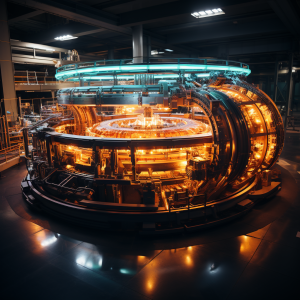
What are the key principles of special relativity, and how do they affect objects moving at high speeds?
Introduction
Special relativity is a theory proposed by Albert Einstein in 1905 that describes how the laws of physics work in the absence of gravity, especially for objects moving at high speeds. It fundamentally changed our understanding of space and time, incorporating them into a unified framework known as spacetime.
Principles of Special Relativity
Two fundamental principles underlie special relativity.
Principle of Relativity
The laws of physics are the same in all inertial frames of reference. An inertial frame of reference is one that is either at rest or moving at a constant velocity – not accelerating or rotating. This means that no experiment can distinguish an inertial frame of reference from another.
Invariance of the Speed of Light
The speed of light in a vacuum is the same for all observers, regardless of their motion or the motion of the source of light. The speed of light (denoted by ‘c’) is approximately 299,792 kilometers per second.
Consequences of Special Relativity
The principles of special relativity have profound implications that lead to several paradoxical effects from our everyday perspective.
Time Dilation
Time appears to pass more slowly for an object moving relative to an observer. This effect is known as time dilation. If a clock were to travel at high speeds relative to an observer, the observer would notice that the clock ticks slower than an identical clock at rest with respect to the observer.
Length Contraction
Lengths appear shorter in the direction of motion for an object moving relative to an observer. This effect is called length contraction. If a rod is moving at high speeds relative to an observer, the observer would measure the rod to be shorter than if it were at rest with respect to the observer.
Relativity of Simultaneity
Two events that appear simultaneous to one observer may not appear simultaneous to another observer moving relative to the first. This means that simultaneity is not an absolute concept but depends on the observer’s state of motion.
Mass-energy Equivalence
Perhaps the most famous result of special relativity is the equivalence of mass and energy, expressed by the equation E=mc², where E is energy, m is mass, and c is the speed of light. This equation implies that energy can be converted into mass and vice versa, which is the principle underlying nuclear reactions such as those in the sun and nuclear power plants.
High-Speed Objects and Special Relativity
The effects of special relativity become significant when dealing with objects moving at speeds close to the speed of light. For everyday speeds, the effects are negligible.
An iconic example of this is the muon, a subatomic particle that is created high in the Earth’s atmosphere by cosmic rays. These muons are moving at speeds close to the speed of light, and due to time dilation, they can reach the Earth’s surface before they decay, something that would be impossible without the effects of special relativity.
In particle accelerators, subatomic particles are accelerated to speeds very close to the speed of light. At these speeds, the particles’ mass increases due to the effects of special relativity, requiring more and more energy to accelerate them further.
Conclusion
Special relativity revolutionized our understanding of space and time, showing that they are not separate entities but are interlinked into a four-dimensional spacetime. It provided a more universal description of the laws of physics and has been confirmed by countless experiments to be an accurate description of the universe at high speeds. Its principles and consequences form an integral part of modern physics and have significant applications in areas such as GPS technology, particle accelerators, and nuclear energy.




